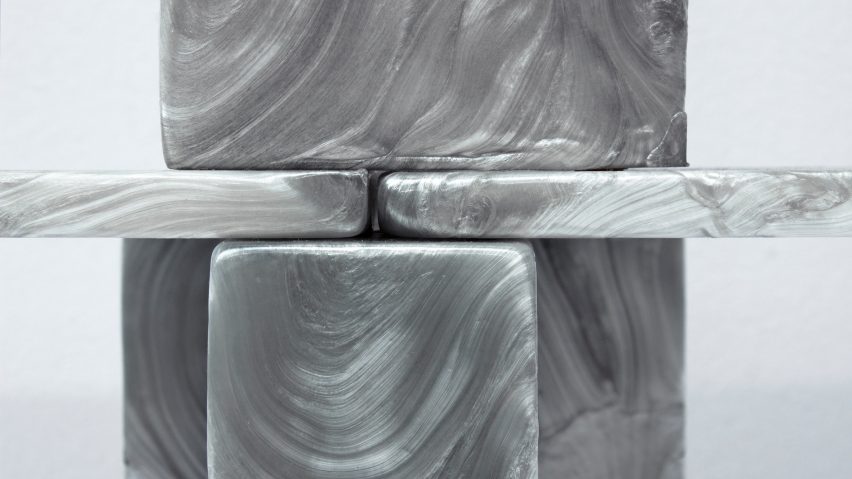
Plasticiet stretches recycled plastic like taffy for Mother of Pearl furniture
Monolithic slabs of pearlescent polycarbonate make up the latest designs from Dutch startup Plasticiet, which aims to bring new value to recycled plastic.
Plasticiet debuted its limited-edition Mother of Pearl collection at the Collectible design fair in Brussels earlier this month.
Consisting of a chair, stool and shelving design, the series is made from slabs of recycled polycarbonate that feature a swirling, shiny finish reminiscent of the natural material after which the collection is named.

This effect is created by kneading and stretching recycled plastic in a technique similar to that used for making the chewy sweet taffy from hot sugar.
"The material is stretched and folded numerous times, aerating it," explained Joost Dingemans, co-founder of Plasticiet.
"The tiny stretched air bubbles captured within the translucent plastic reflect light, resulting in an iridescent glow resembling mother of pearl," he added.
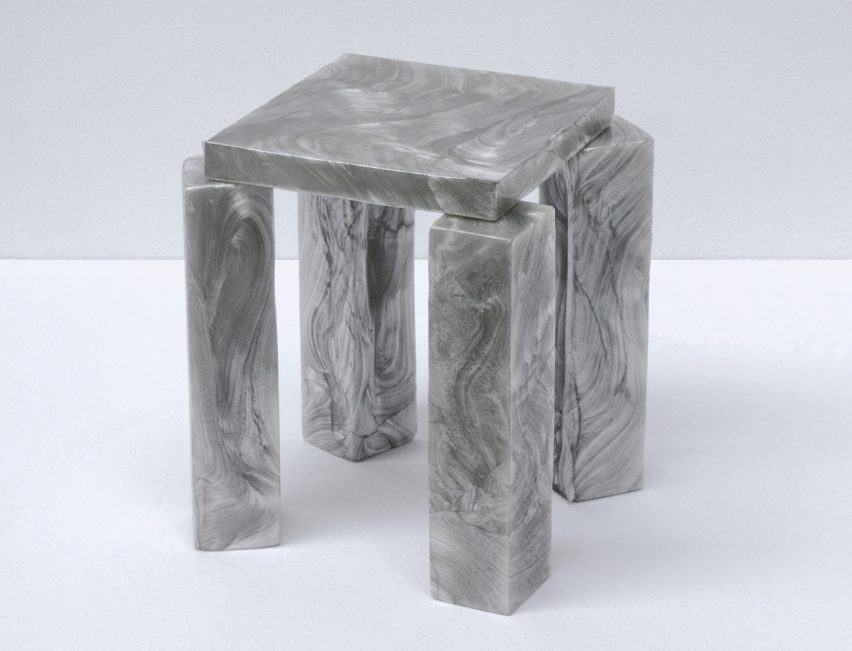
Each slab used to create the furniture is individually moulded before being connected together. The final forms were inspired by primitive human-made stone artefacts from the final part of the Stone Age.
"We can create much larger pieces than what the collection currently shows by playing with the composition and holding in mind that polycarbonate is an extremely tough material," Dingemans told Dezeen.
"Currently the largest single block we've made was around 15 kilograms, which is twice the size of the chair's seat," he continued. "At that weight it's quite a tough job stretching and folding the material, but we're planning to go bigger still!"
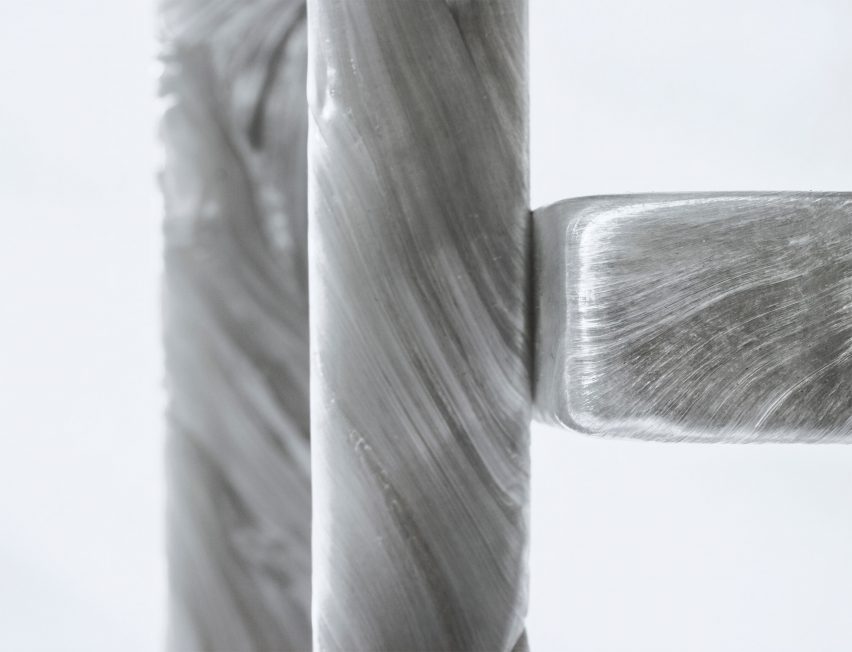
Rotterdam-based Plasticiet was founded by Dingemans and Marten van Middelkoop, who work with plastic companies across the Netherlands to find new uses for recycled plastics.
The company produces sheet-plastics that have a similar look to man-made stone composites like terrazzo, and recently collaborated with eyewear company Ace & Tate to create a store interior made from one ton of local waste in Antwerp, Belgium.
"There are several companies in the Netherlands with whom we partner such as LC Plastics, Suez and PRC," said Dingemans.
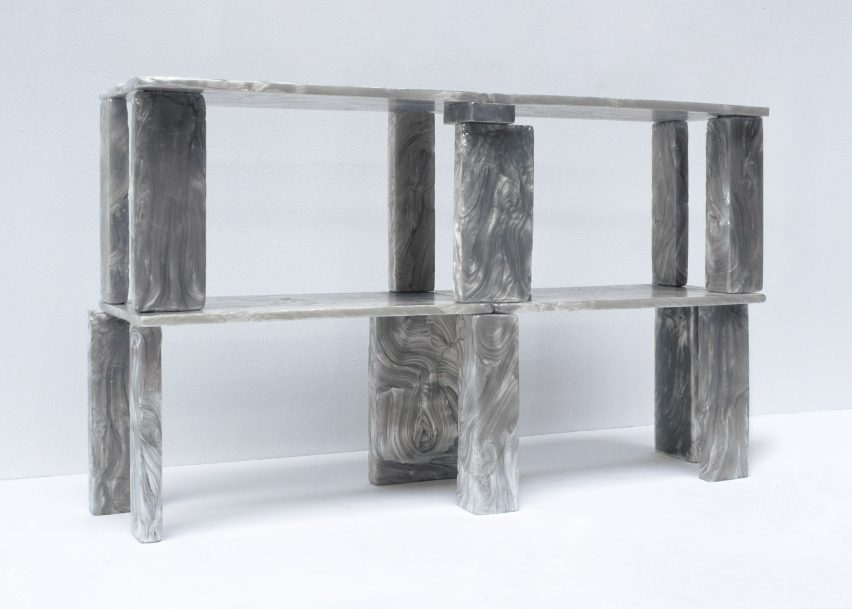
As the designer explained, they often visit the companies' shredding facilities to see what's available, or they receive a call when a batch of plastic arrives that's contaminated with leaves, water or a wrong plastic type mixed within.
"The regular plastic industry often cannot deal with this because it will damage their machinery," added Dingemans. "Normally batches like this end up in 'thermal recycling' or in other words; incineration."
"Each sheet material in our collection tells a different origin story," he continued. "For instance our Chocolate Factory material is made of discarded moulds from the chocolate industry where the pastel tones are used as colour coding, while Nova mainly contains off-cuts from the production of air cleaning units."
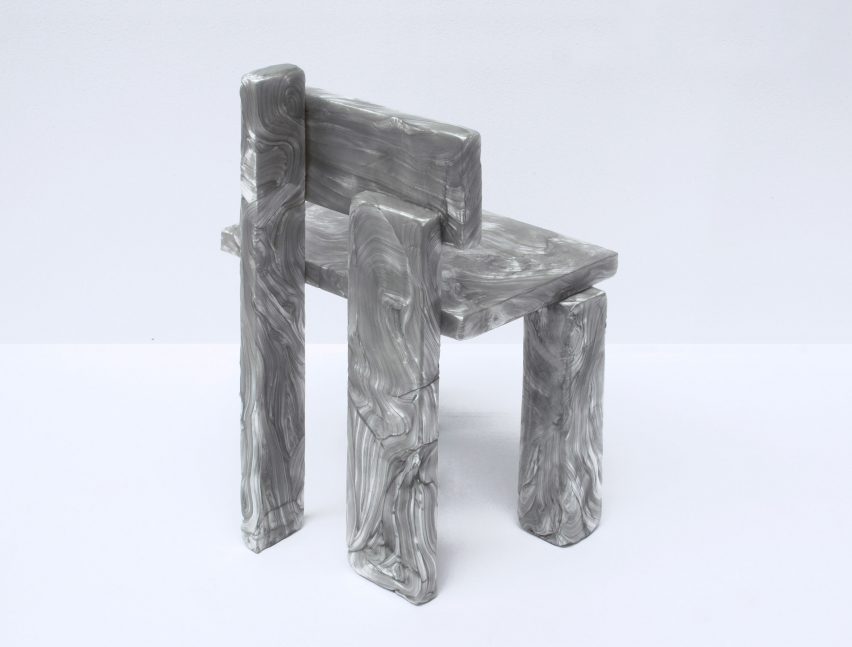
For the Mother of Pearl collection, the duo wanted to show that recycled plastic could hold its own among other high-end materials and craft techniques used to make limited-edition and collectible design objects like those shown at the Collectible fair.
"The Mother of Pearl collection is made out of polycarbonate, a highly technical plastic used in construction, electronics and even bullet-proof 'glass'," said Dingemans.
"Hence the slightest amount of contamination renders it almost useless for its current purposes. We're happy to craft this material into pieces that allow it to shine again."
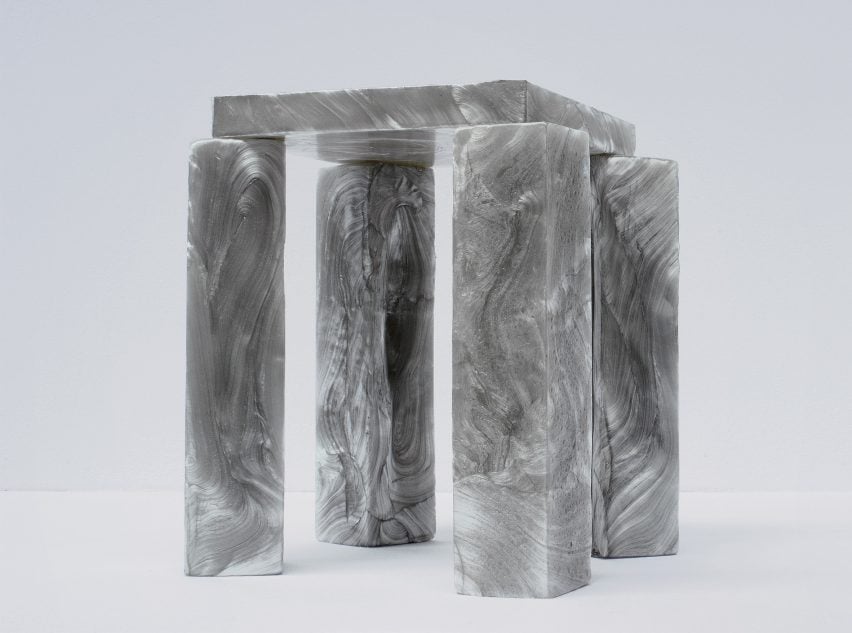
Recycled plastic is rapidly gaining in popularity among designers, with recent examples including the "first 100 per cent recycled cladding material", home accessories made from clumps harvested straight from the factory floor and marbled tiles made from post-consumer plastic waste.